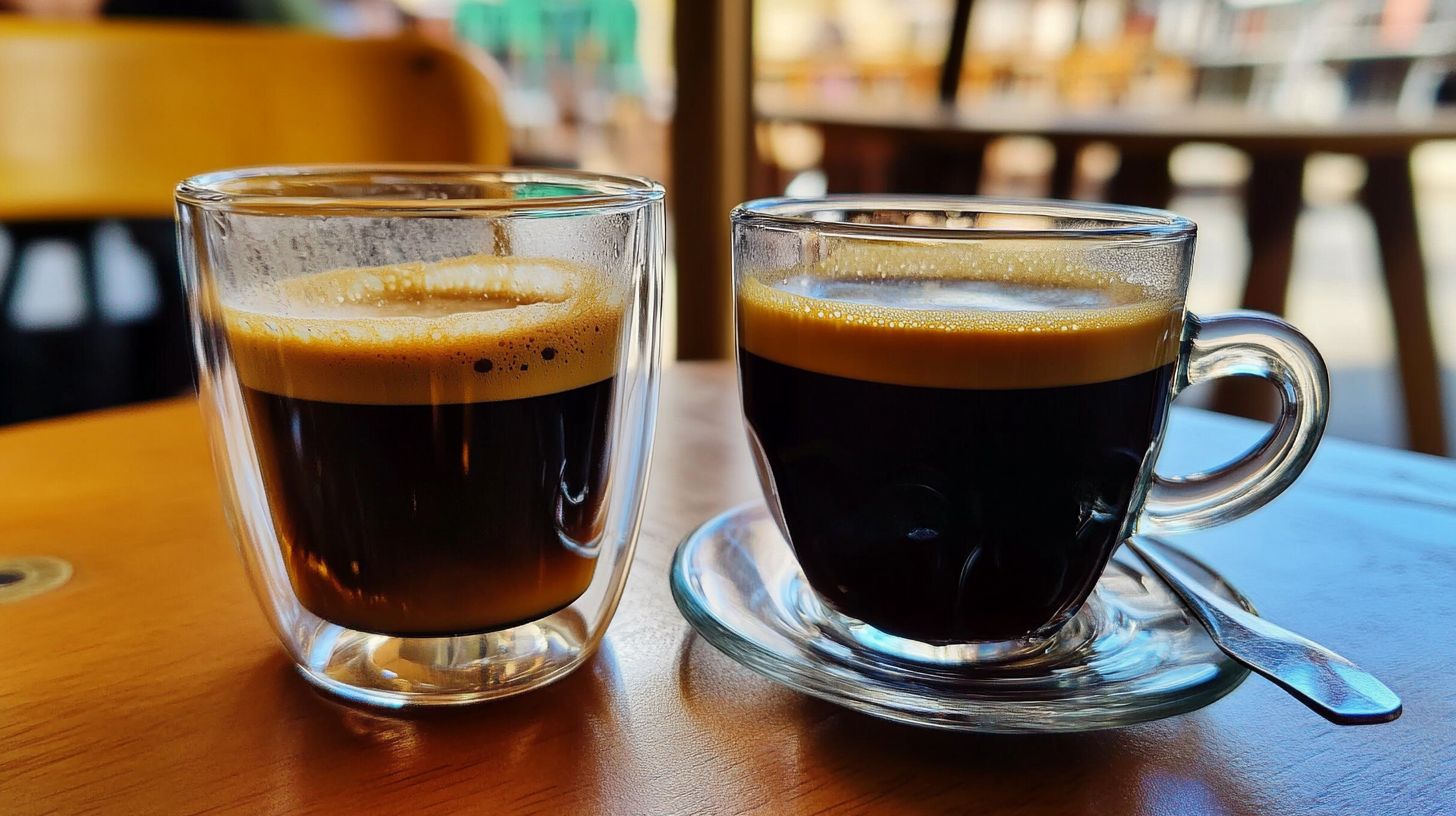Italian Espresso Vs American Espresso: A Taste Comparison Of Two Coffee Cultures
You love your daily dose of caffeine but struggle between two vastly different styles – Italian versus American? Choosing between them can feel like comparing apples with oranges – both delicious but distinctively unique!
Did you know that traditional Italians prefer their shot made mostly – around 80% – from Arabica beans mixed with up-to around 20% Robusta? These proportions provide richer body & heavy flavour profiles when put side-by-side with single origin brew typical throughout much of the United States where consumer demand remains high mainly because lighter notes allow easy sippability desired so peoples drink all morning rather than opting for a short stronger mix during lunch breaks or mid-day stops?!
This article walks you through the differences between two varying worlds, one focussed on strong brews versus a tame cup, described respectively, pointing out quantity alongside different serving techniques, table manners, and sustained caffeine kicks.
It helps in choosing roasted cultivars that endure alongside meals, considering features for working students, and leading in busy environments. It also highlights industry innovation, gathering widespread interest, suggesting outstanding points in incomplete statistics, vitality during workouts, and the calming coastal essence.
The text further touches on various other observations, all leading to a well-informed decision.
In which way do you take your cup? Perhaps after finishing reading, you’ll make better-informed choices.
Defining the Brews: Italian vs. American Espresso

Italian espresso is made with finely ground coffee beans, typically 7g per shot, and brewed using high pressure to produce a rich and concentrated drink. American espresso, on the other hand, often uses a coarser grind and more water, resulting in a milder and longer drink.
Italian Espresso: Characteristics and Brewing Techniques
You’re familiar with the rich and distinct flavour of Italian espresso. But have you ever wondered what makes it so unique? Italian espresso blends typically contain up to 20% robusta beans, which provide a bolder and more bitter taste.
Italian espresso is brewed using finely ground beans, with a particle size of around 200-300 microns. Water temperatures between 90-94°C (194-201°F) are used for ideal extraction.
Italian machines apply approximately 9 bars of pressure during extraction, which lasts around 25-30 seconds. This results in a shot of espresso with a distinctive crema on top.
American Espresso: Characteristics and Brewing Techniques
American espresso employs an advanced brewing method, utilizing water temperatures around 93-96°C (199-205°F) and pressure ranging from 9-15 bars. This generates a distinct flavour profile that stands out from other types of coffee.
Your typical American espresso shot ranges from 30 ml to 50 ml. These shots are often diluted to create an Americano-style coffee drink. Popular espresso drinks in America include drip coffee, medium roast, dark roast, long black, and decaf.
Serving sizes for American espresso tend to be larger, often accompanied by milk and sugar. Arabica beans are mainly used in American espresso blends, which require a coarser grind to achieve a smoother flavour.
Key Differences in Taste and Flavour Profiles

Italian Espresso packs a rich flavour punch – its bold notes linger momentarily after each sip… In contrast,American Espresso usually provides milder hints throughout – relying heavily on steaming techniques which robustly draw out every bit flavor within generous volumes many truly love!
Italian Espresso: Rich and Robust

Your typical shot of Italian espresso is rich – expect about 25 ml of strong coffee made from around 7 g of finely ground beans. This blend often includes both Arabica and Robusta beans; Arabica dominates most commercial blends worldwide but Italians traditionally combine them.
American Espresso: Milder and More Voluminous
American espresso is a different beast compared to its Italian counterpart. You’ll find it’s smoother, milder, and balanced – a result of using 100% Arabica beans, which contribute to a milder flavour profile.
Regarding serving style, American espresso typically comes in larger sizes, often with milk and sugar added – a stark contrast to the traditional Italian espresso experience. Flavoured syrups are also commonly used to customise the drink to individual tastes.
The popular Americano, made by adding hot water to espresso, is another prime example of how American espresso is often milder in flavour.
Cultural Significance and Coffee Rituals

In Italy – a country famous for its passion for life – espresso is no ordinary drink; Italians see their traditional morning shot as a fundamental social ritual that brings people together… It sets them up for another busy day spent living la dolce vita – savouring every moment!
Espresso in Italy: An Integral Part of Daily Life
In a typical Italian bar, the focus is on quick consumption – Italians drink their espresso fast, usually while standing at the counter. Your traditional Italian espresso experience starts with a strong, bitter flavour, which Italians prefer in dark roasts.
Traditional customs dictate that you should not consume cappuccinos after mid-morning. This etiquette emphasizes the cultural practices of leisure and connection in coffee consumption – Italians prioritize their espresso time as a social break to connect with others in the community.
Espresso in America: A Versatile Beverage
You’ll notice American coffee culture primarily revolves around larger servings of drip coffee with a milder taste. In the United States, Americans enjoy larger portions of espresso drinks leisurely.
These often include extensive customisation, including milk alternatives and flavoured syrups.
When visiting American coffee shops, prices are generally higher compared to Italy. However, you’ll experience a diverse range of coffee options—from classic American-style espresso to creative drinks featuring flavoured syrups and steamed milk.
This diversity showcases America’s unique take on traditional Italian espresso.
Comparing Caffeine Content and Serving Styles
Here’s how Italian espresso compares to American espresso regarding caffeine content – typically 16mg per ounce for Italian-style brews versus 8mg per ounce for US-style ones.
Serving styles differ greatly too – traditional Italian espressos come as single shots (about 25ml), while Americans often serve their espressos larger, frequently varying between 60ml and 240ml depending upon regional preferences and whether extra ingredients like milk are added!
Caffeine Levels in Italian vs. American Espresso
Italian espressos typically contain about 63 mg of caffeine per 1-ounce shot – roughly the same as their American counterparts. This similarity in caffeine content stems from both brewing processes being nearly identical.
In Italian espresso, however, caffeine content can fluctuate – usually between 50 to 75 mg per shot – based on factors such as preparation methods and coffee bean varieties. A double shot of Italian espresso, or doppio, averages between 125 to 150 mg of caffeine.
Variations like Ristretto and Lungo may also have unique caffeine levels due to their distinct brewing styles.
Typical Serving Practices: Size and Presentation
You order an espresso in Italy, and it’s served in a small ceramic cup, typically around 25 ml. In contrast, American espresso servings range from 30 ml to 50 ml. This size difference reflects the distinct cultural approaches to coffee consumption.
Italian espresso is meant to be enjoyed quickly, usually at a coffee bar, whereas American espresso is often savoured in larger quantities.
The grind and brewing techniques also vary between the two styles. Italian espresso uses a finer grind, with 7 grams of coffee for a 25 ml shot, while American espresso employs a coarser grind for a smoother flavour.
These differences contribute to the unique taste profiles of each style.
Conclusion
Italian Espresso and American Espresso have distinct taste profiles. Italian Espresso is known for its rich, robust flavour, while American Espresso is milder and more voluminous. When choosing between the two, think about your personal taste preferences.
Italian Espresso is typically made with a fine grind of coffee beans and water temperatures between 90-94 degrees Celsius. American Espresso uses slightly coarser or finer grinds with water temperatures around 93-96 degrees Celsius.
Each brewing method produces a unique flavour profile. To experience the authentic taste of each espresso style, try them at a local coffee shop or experiment with brewing methods at home.
FAQs
What is the main difference between Italian espresso and American espresso?
Italian espresso has a stronger flavour profile compared to American espresso due to its brewing method and roast level.
How does Italian coffee culture differ from American coffee culture?
Italian coffee culture emphasises traditional espresso served in small cups, while American coffee culture often involves larger cups with added milk and flavourings.
What is the typical ratio of coffee to water in Italian espresso?
The traditional Italian espresso brew ratio is around 7 grams of coffee for every 25 millilitres of water.
Who developed the first patent for an espresso machine?
Angelo Moriondo developed the first patent for an espresso machine, which relied on steam to reduce brewing time.
How does the caffeine content of Italian espresso compare to American espresso?
Italian espresso typically contains around 16 milligrams of caffeine per ounce, while American espresso may have varying levels depending on roast and brewing methods.
What is the traditional way of serving Italian espresso?
Italian espresso is usually consumed in small cups without added milk or sugar, allowing the drinker to appreciate its intense flavour profile.

